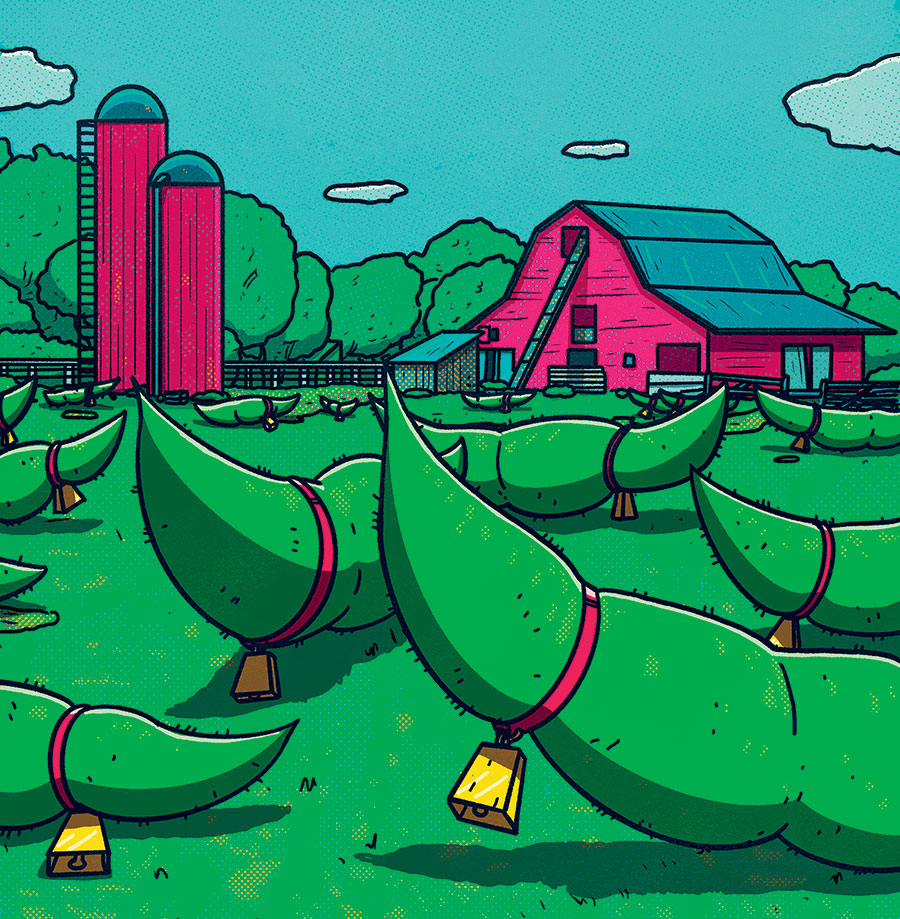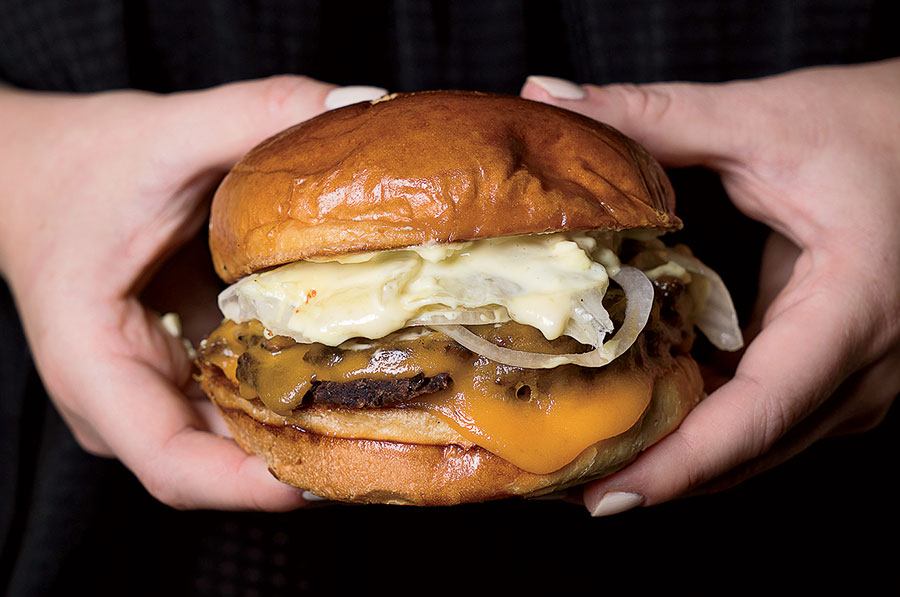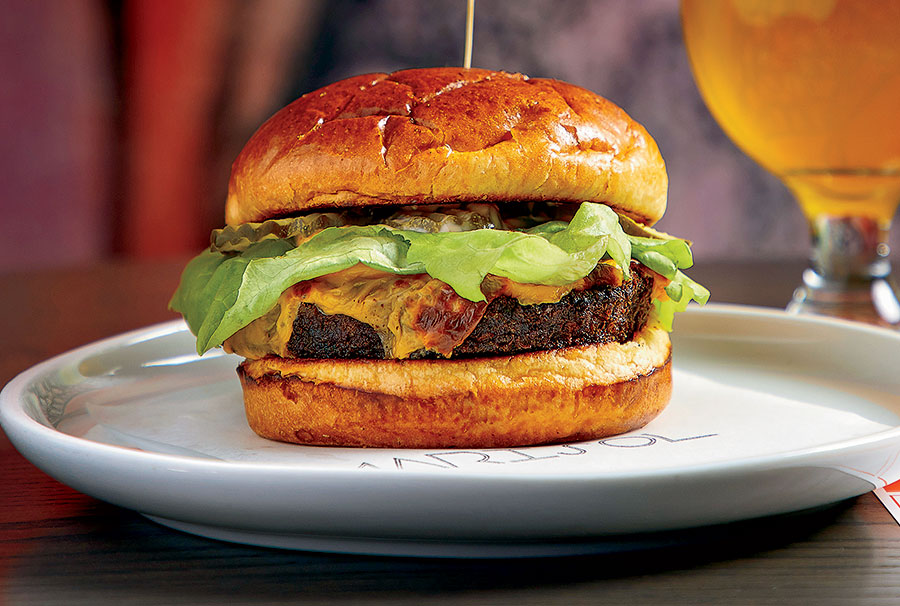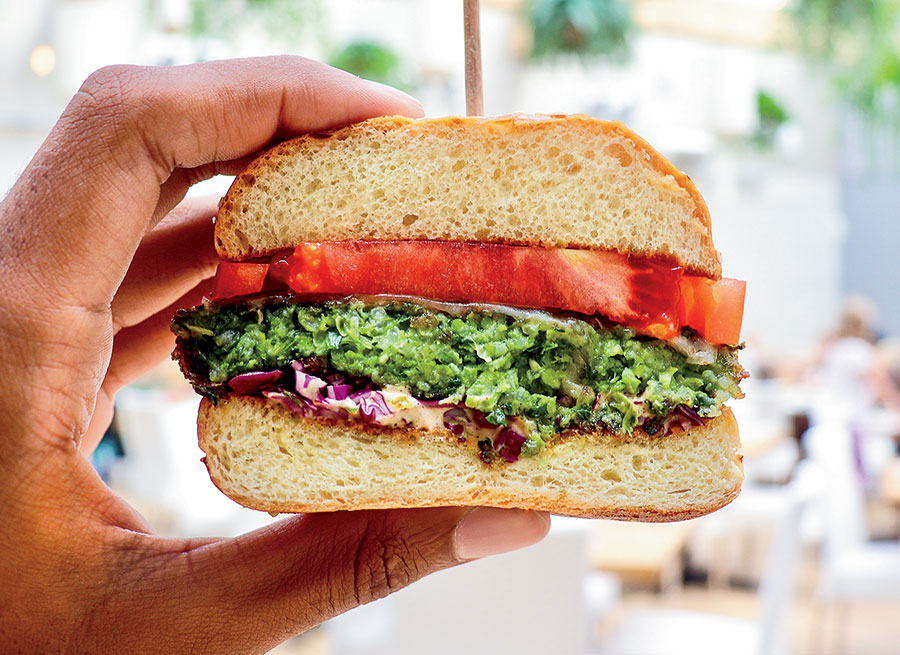
More than a decade ago, Harold Wilken, a soybean farmer in Iroquois County, transformed his 2,200-acre farm into an organic operation and, rather than growing animal feed, began supplying beans for soy milk and miso soup, and to the Edgewater tofu maker Phoenix Bean.
Was Wilken ahead of his time? Since the fall of 2018, Burger King has introduced the soy-based Impossible Burger, White Castle has added the Impossible Slider, and KFC has begun selling the chickenless Beyond Fried Chicken. That means plant-based meats, once on the menu only at vegetarian restaurants, are now in every neighborhood. The Economist called 2019 “the year veganism goes mainstream.”
For Illinois, which grows more soybeans than any other state, the rise of vegan hamburgers is an Impossible dream. Just as we once dominated the meat industry with the Union Stock Yards, we can dominate the meatless industry with our farms. “Illinois is the ideal place to develop this industry,” says Vijay Singh, director of the University of Illinois’s Integrated Bioprocessing Research Laboratory in Urbana, which is developing alternative proteins. “We have some of the most fertile ground in the world.”
Illinois’s soybeans can be converted into vegan eggs and into heme, the additive that gives the Impossible Burger its meaty taste, Singh says. Protein can also be fermented from corn sugar, providing a new market for the state’s other staple crop — which needs a new market now that high-fructose corn syrup is flavoring fewer soft drinks. “All the [food] startup culture is happening in California or Massachusetts, but where are they getting all their sugars?” asks Singh. “The sugars are coming from Illinois. It’s a great thing for our corn and soybean farmers.”
Archer Daniels Midland, which has its global headquarters in Chicago and its North American HQ in Decatur, a.k.a. the Soybean Capital of the World, has developed a pair of corporately named soy proteins called Arcon and Textura, which were the basis of the vegan chicken nuggets and pulled pork that the company served at a trade show in Germany earlier this year. ADM is also partnering with Marfrig Global Foods to develop a veggie burger for the Brazilian market.
Chicago’s own McDonald’s buys more beef than any other company in the world. But even the chain that turned “two all-beef patties” into a catchphrase is seeing a market for beefless patties. McDonald’s is selling a soy-based burger called the Big Vegan TS in Germany, although the company has not yet decided whether to bring it to the United States. Former McDonald’s CEO Don Thompson, who made a career out of knowing what people want to eat, owns a $65 million share in Beyond Meat.
“Plant-based meat is definitely an important market opportunity,” says Matt Ball of the Good Food Institute, which promotes plant-based meat substitutes. “During their market test of the Impossible Whopper in Missouri, Burger King found that traffic was up in their test stores by double digits, while traffic was down in the other U.S. locations.”
Even with fast-food giants getting in on the action, alternative meats still make up only about 1 percent of the entire meat market. But sales of plant-based foods that mimic beef, chicken, milk, and eggs have increased 31 percent over the past two years, to $4.5 billion. They could reach $140 billion over the next decade, according to market analysts. That’s not simply because more people are adopting vegan and vegetarian diets, says Ball. Out of concern for their health and the environment, more people are adopting a “flexitarian” diet, peppering only the occasional serving of meat into an otherwise plant-based diet. (A United Nations report released in August noted that worldwide carbon emissions could fall by as much as eight gigatons annually if people universally eat fewer animals.)
Ask most Illinois farmers what they grow, and you’ll get a three-word response: “corn and beans.” Beyond Meat uses a pea-based protein, which provides an incentive for farmers to diversify what they grow. An experimental farm in northern Illinois is growing thousands of acres of peas and other legumes to test the state’s suitability for those crops, which generally thrive in a cooler climate.
Harold Wilken’s best-known customer, Phoenix Bean, buys more of his soybeans every year. Since Jenny Yang bought the tofu company in 2006, its sales have quintupled, and she expects them to increase 25 to 30 percent in the next two years. Phoenix Bean now uses half a million pounds of beans a year, selling its tofu and soy milk at farmers’ markets and to Whole Foods, Mariano’s, and Eli’s Cheesecake, which uses tofu as the main ingredient for its vegan dessert. “We only use Illinois soybeans,” says Yang. “It’s peace of mind. I want to make sure I know where they’re growing. I visit their farms.”
There’s a catch to this vegan future, though: The more we replace animal protein with plant-based meat, ironically, the fewer beans we’ll need. That’s because, according to the Illinois Soybean Association, 80 percent of the beans grown in this state are ground into animal feed. A plant-based burger requires just one-tenth the amount of soy to produce as a hamburger. That doesn’t necessarily mean fewer opportunities for farmers, but it does means finding different markets for their crops. “When we went organic, our whole goal was to feed people instead of animals,” says Wilken.
The nearly meat-free future depicted in the 1973 horror-thriller Soylent Green, in which people solved food shortages by eating each other, was set in 2022, just two years away. But the good news: With the rise of plant-based foods, the actual future might not be a dietary dystopia after all.
Plant-Based Burgers, Cheffed Up
Three delish twists local restaurants are putting on meatless patties
— Carly Boers

Bad Hunter’s specimen — two black bean, mushroom, and shredded beet patties topped with oozy cheddar and tomato jam — has such mass appeal, even with carnivores, that the menu boldly suggests adding bacon.

Marisol uses a hodgepodge of grains and earthy-flavored beets, shiitake mushrooms, and cashews for its patty, then slathers it with an aïoli-based sauce. It’s as destination-worthy as any exhibition upstairs at the MCA.

Green chickpeas, cilantro, spinach, and parsley contribute to the emerald hue of Summer House Santa Monica’s offering. Dressed with a crimson MightyVine tomato slab and shredded red cabbage, it begs to be Instagrammed.


